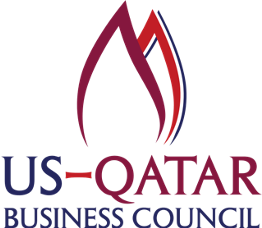Qatar's Financial Services Sector

$14B
Contribution of the Financial Services sector to the GDP of Qatar
18
Banks in Qatar
About Qatar's Financial Services Sector
The financial services sector is one of Qatar’s most fruitful industries in its economy, adding approximately $14.3 billion to the country’s GDP in 2018. There is a major influx of investments continuing to flow into Qatar.
In 2019, Qatar Financial Centre reported a 33% increase in members in just the one year, to 816 total members. In 2019, the Central Bank of Qatar saw 24% growth in revenue and a net profit gain of 21%, both of which were the best in the bank’s history. Ahli Bank also had an increase in assets, up $1 billion or 8.7% from the previous year. In the same year, Al Khaliji’s assets grew by $500 million, its revenue grew by $11 million, and it had a gain in net profits of 6.2% or $10 million.
As the overall banking sector has grown, so has the Islamic banking sector. Qatar Central Bank reported that Islamic banks saw a 10.3% CAGR increase compared to a 9.8% increase in conventional banks from 2012-2018. Furthermore, from 2015-2019 islamic financial service institutions recorded an 8% increase in assets overall. According to the Qatar Financial Centre, investment portfolios of Islamic banks had a higher rate of investments in Qatar than conventional banks, a 19% to 9% comparison. Two examples are Qatar Islamic Bank and Masraf Al Rayan. In 2019, both banks had an approximate increase of 11% in financing and deposits, and had assets grow by about $3 billion.
Since the 1960s domestic insurers have had control of Qatar’s insurance market. However, there still are not that many insurance companies; just eight local and four foreign firms. Qatar has had the fastest growing insurance sector in the GCC from 2013-2018. In that time frame, the country’s compound annual gross rate (CAGR) increased by 16%. From 2019-2024, it is estimated that Qatar’s insurance sector will grow by a CAGR of 2.4%. Economic advancement, population growth and infrastructure development are all set to drive this expansion.
FinTech is also being promoted in the country. Through initiatives from QDB, QFC, and QCB, Qatar has set itself up to be a regulatory sandbox, making it easier for FinTech companies to establish themselves and thrive in the country. One major initiative is the Qatar FinTech Hub (QFTH). QFTH has an incubator and an accelerator program. While the incubator is for new startups and the accelerator is for established companies, both are set up to nurture and grow FinTech companies in Qatar, with aspirations of becoming a regional leader in FinTech.
Qatar also has one of the region’s leading stock exchanges. Qatar Stock Exchange (QSE), established in 1995 as the Doha Securities Market, supports Qatar’s economy by providing a venue for capital raising for Qatari companies as part of their corporate strategy and giving investors a platform through which they can trade a variety of products in a transparent and efficient manner. With companies 48 listed in the QSE, it has been a member of the World Federation of Exchanges since 2007.
Qatar’s largest banks are Qatar National Bank, Qatar Islamic Bank, Commercial Bank of Qatar Doha Bank, Masraf Al Rayan (merging with Al Khaliji), Qatar Islamic International Bank, Al Khaliji, and Ahli Bank Qatar. Qatar National Bank is by far Qatar’s largest financial institution, with more $200 billion in total assets than the second largest bank in Qatar, Qatar Islamic Bank.



